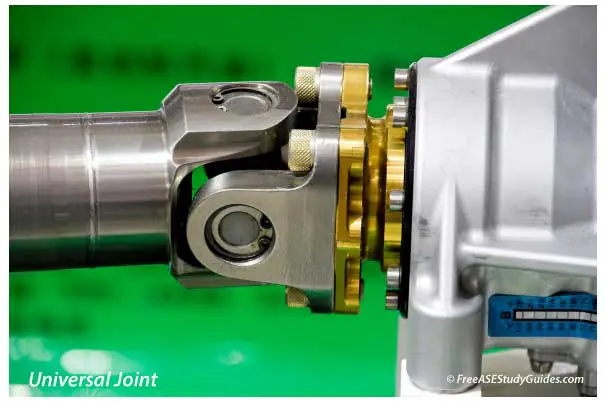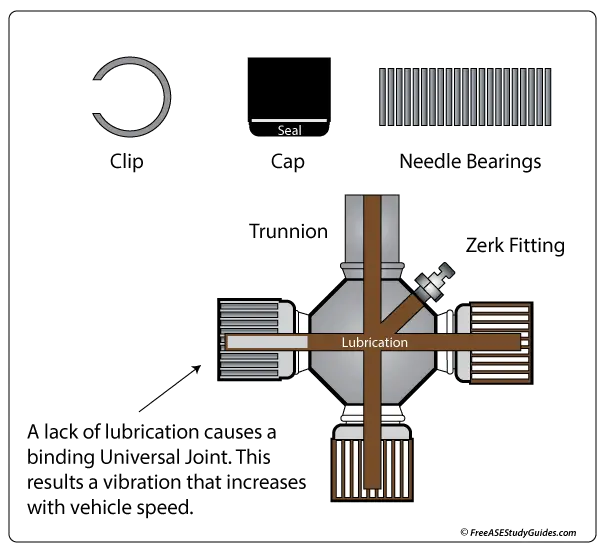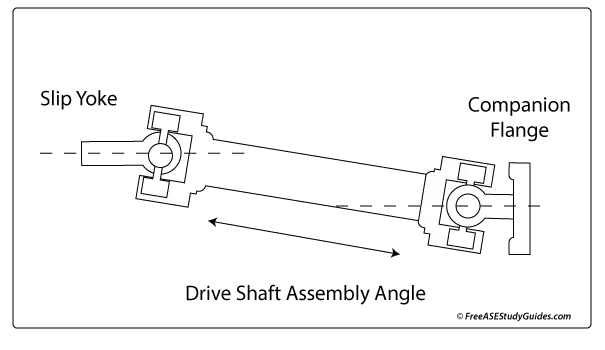Universal Joints

A Universal Joint consists of a universal joint spider (the cross in the middle), the bearing caps, and the retaining clips that keep the assembly in place. Most automobiles use a single Cardan-Type U-Joint.

Universal joints offset the driveshaft angle and allow for changes as the vehicle travels down the road. The transmission end of the driveshaft that contains the slip yoke remains stationary. The end attached to the differential moves up and down over dips and bumps in the road. The stationary angle of the driveshaft from the transmission to the differential is called the installation or assembly angle.

Each of the universal joints has two yokes attached. As the spin of the driving yolk remains constant, the trailing yolk speeds up and slows down twice for each revolution. The speeding up and slowing down causes a vibration along the driveshaft. Universal joints remain on the same plane. They do this because the vibration from the rear U-Joint cancels out the vibrations from the front. This is called the cancellation effect.
Driveshaft angles are checked and adjusted using an inclinometer. Adjustments are made from the axle end; check with the manufacturer for special procedures. A shim is added between the transmission mount and the extension housing if necessary.